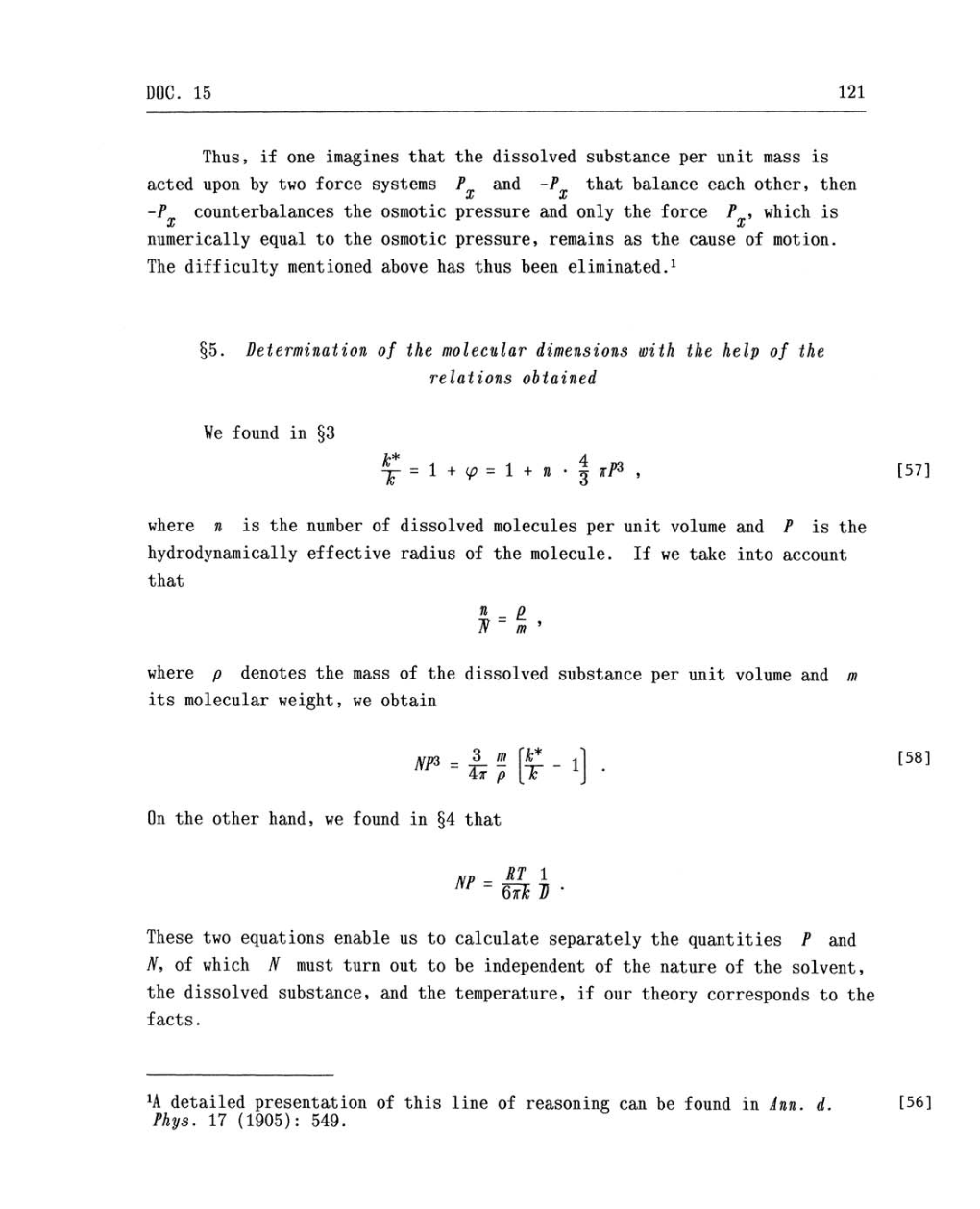DOC.
15
121
Thus,
if
one
imagines
that the dissolved substance
per
unit
mass
is
acted
upon
by
two
force
systems
P and
-P
that balance
each
other, then
x x
-Px
counterbalances the osmotic
pressure
and
only
the force
Px, which
is
numerically
equal to
the osmotic
pressure,
remains
as
the
cause
of motion.
The
difficulty
mentioned above has
thus
been
eliminated.1
§5.
Determination
of
the
molecular dimensions
with
the
help
of the
relations obtained
We
found
in
S3
^-=l
+
p=l
+ »
•
ä
iP3
,
[57]
where
n
is
the
number
of dissolved molecules
per
unit
volume and
P
is
the
hydrodynamically
effective radius of the molecule. If
we
take into
account
that
n
_
o
N =
m
'
where
p
denotes the
mass
of the dissolved substance
per
unit
volume and
m
its molecular
weight,
we
obtain
NP3
=
3
m
k*
4t
p
k
On
the other
hand,
we
found
in
§4
that
NP
=
1
M
-
6
D .
These
two equations
enable
us
to
calculate
separately
the quantities
P
and
N,
of
which
N must turn
out to be
independent
of the
nature of the solvent,
the
dissolved substance,
and
the
temperature,
if
our
theory corresponds
to
the
facts.
[58]
1A
detailed
presentation
of
this line of
reasoning
can
be found
in
Ann.
d.
Phys.
17 (1905):
549.
[56]
